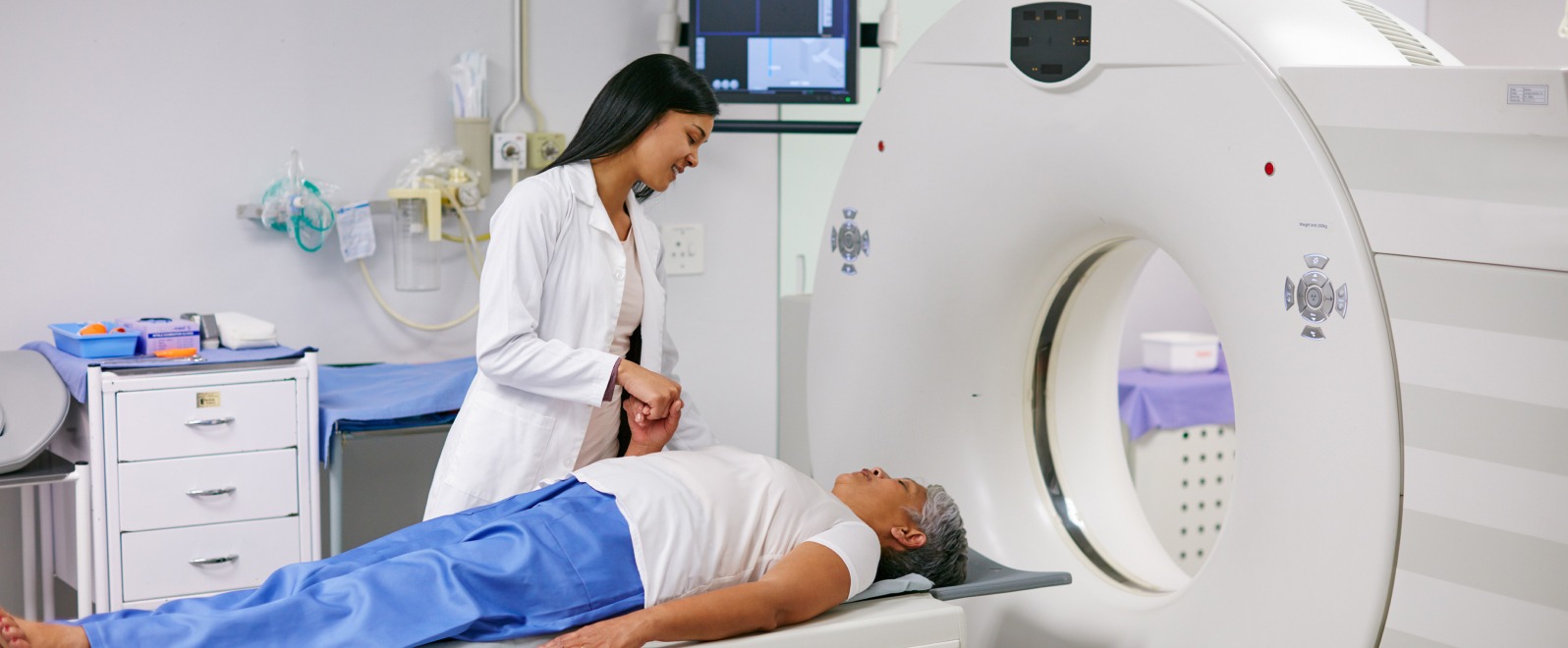- Our Services
- Diagnostic Imaging
- Positron Emission Tomography (PET) and PET/CT

Positron Emission Tomography (PET)
As its name suggests, Positron Emission Tomography, or PET, uses detection of the subatomic particles called positrons as its diagnostic pathway. Through this positron emission, PET shows how organs are functioning, and when combined with CT (computed tomography), as it often is, also shows detailed views of the part of the body being studied.
PET and PET/CT are most often used in determining how clinical therapies are working, to evaluate disease progression, and/or to evaluate whether a growth is benign or malignant (cancerous). It can also be helpful in investigating neurological conditions such as Alzheimer's disease, therapy-resistant seizure disorders, as well as cardiovascular disease.
What to Expect
PET/CT is a technologically advanced diagnostic procedure and usually lasts about 2-3 hours. Extra time is needed to administer a small amount of the radioactive glucose solution that enables organ functions to be tested. Resting time is needed for about an hour following the injection.
For more Diagnostic Imaging information, please contact our Placerville or Cameron Park location.
Our Locations
-
 Diagnostic Imaging - Cameron Park 3581 Palmer DriveMap & Directions
Diagnostic Imaging - Cameron Park 3581 Palmer DriveMap & Directions
Suite 300
Cameron Park, CA 95682 -
.1).2503130952078.jpg) Diagnostic Imaging - Placerville 1100 Marshall WayMap & Directions
Diagnostic Imaging - Placerville 1100 Marshall WayMap & Directions
Placerville, CA 95667 -
.1).2503130952078.jpg)
See What Patients Are Saying About Marshall
-
“A huge thank you to all the staff – nurses, doctors and attendants – who took care of our dad while he was in the hospital for a week. Everyone we came in contact with was helpful, professional and ...”
-
Our family is so appreciative
“Our family is so appreciative of all the care and compassion we received during my breast cancer lumpectomy process. You all make healing so much easier and faster. Our family thanks you all.”- N.R. -
These folks make the process of going through cancer and all the meds quite easy.
“These folks make the process of going through cancer and all the meds quite easy. For me it was easy, and I could walk out and drive home after the treatments, I am thinking I'm lucky.”- C.M. -
I would recommend it for anyone who wants great medical care.
“Marshall is a really good medical center containing all necessary departments needed. The medical care given by my PCP is really top in class. In fact, all of the people I have come into contact with ...”- KB -
The whole staff is so nice and they truly want to help.
“I love the staff here. They always follow through with what they say they will do. I've never had to remind them. They are amazing. The whole staff is so nice and they truly want to help.”- AF -
I would like to thank the ER team for my amazing care I received.
“I would like to thank the ER team for my amazing care I received. I was treated with respect and caring throughout. The Dr. was very thorough with her work up. I finally got an accurate diagnosis for ...”- K -
“Marshall is filled with great doctors, and caring staff and nurses. It feels like family here.”- JH
-
“I sat in the ER waiting room for about 5 seconds before they were triaging me. The nicest most professional staff ever. I’m talking about everyone, not just the nurses and doctors. God bless all of ...”- Cory
-
“I had an MRI and I was very nervous. The radiologist was terrific! Kind, patient and got me through it, all calm and collected. Thank you!”- JL


